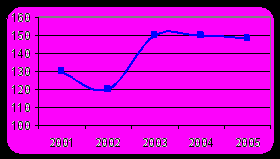The Belarusian Market for Tomatoes
| Вид материала | Документы |
- Market leadership in the 3 g market, 117.72kb.
- Belarusian bibliography on lichenology, 5271.07kb.
- Деловая программа XIX международной туристской выставки inwetex-cis travel market, 56.77kb.
- 453256, Россия, Башкортостан, г. Салават, ул. Молодогвардейцев, 30 Тел.: (3476) 39-33-78,, 55.45kb.
- Заявка передается в виде сканированной копии по e-mail: market-pompa@liv orel, 27.8kb.
- Ля, продажа, сбыт, который в свою очередь является производным от market и означает, 1602.05kb.
- 1 Маркетинговые исследования и их виды, 407.48kb.
- Market Research Russia презентация доклад, 249.92kb.
- Сценарий аттестационного интервью «вопросник», 440.55kb.
- Fried Green Tomatoes at the Whistle Stop Cafe Перевод: Дина Крупская Аннотация Знаменитый, 2492.55kb.



The Belarusian Market for Tomatoes
Target Market Confirmation Study
Conducted by CAMIB for USAID/CNFA’s
Agribusiness Development Project
July 2006
CONTENT
Key Observations and Recommendations 3
Background 3
Import Trends 4
Belarusian Tomato Imports 4
Moldovan Tomato Exports 6
Market Access 8
Information on Companies Interviewed 8
Sources of Supply and Import Seasonality 8
Major Clients and Markets 9
Product Requirements and Preferences 9
Logo/Brand 10
Quality and Certification Requirements 10
Tomato Varieties and Trends 11
Local Production 11
Moldovan Product Import, Wholesale and Supermarket Prices 11
Extra-CIS Countries’ Product Prices 12
Major Competitors 12
Moldovan Tomato: Buyers’ Perceptions and Recommendations 12
List of Reference Materials 14
Annex 1. Greenhouse tomato Characteristics 17
Annex 2. Markets in Selected cities in Belarus 20
Annex 3. Belarus Wholesale Outlets 23
Key Observations and Recommendations
The population of the Republic of Belarus was 10.3 million in 2005 and is largely urban, with towns distributed evenly across the country. More than 50% of Belarusians live in towns with populations exceeding 50 thousand people, and 17% live in smaller towns.
According to official statistics of the CIS State Committee the average annual vegetable consumption per capita in Belarus in 2004 was 207 kg, twice that in Russia or Tajikistan (101 kg in each country).
The results of the survey of Belarusian importers and traders revealed that consumer preferences in Belarus are moving from quantity to quality. The local population is demanding both better quality local production and better quality imports. Achieving the higher level of quality demanded by consumers is considered to be a challenge for Moldovan producers, whose products are becoming less and less competitive in current market conditions.
An important issue for Moldovan producers is to focus on packaging improvement. The packaging used by Moldovan exporters does not fully comply with the requirements of Belarus importers or retailers (especially supermarkets). Tomatoes originating from Moldova are packed in wooden and plastic boxes, while Belarus importers prefer non-returnable 5-7 kg carton boxes.
In addition to quality and packaging, it is very important to pay attention to product presentation, its appearance, size, variety, and country standards and regulations.
The Ministry of Agriculture in Belarus has plans to create 38 ha of new greenhouses with energy-efficient equipment in every region of the country, by the end of 2006. It is anticipated that the increased local production of vegetable supply (during all twelve months of the year) will largely meet local market demand for cucumbers and tomatoes, and will considerably diminish import volumes.
Considering the trade regulations between Moldova and Belarus, market proximity, awareness of Belarus consumers about Moldova and the flavor characteristics of fruits and vegetables produced by the country, Belarus remains a potential market for Moldovan produce. However, product quality and presentation must be improved, and Moldovan exporters should carefully identify their markets for both tomatoes and cucumbers before finalizing plans for production and export sales.
Background
Production trends
World production of tomatoes was around 125 million tons in 2005, 17% more than in 2001. According to FAO average annual production figures, during 2001-2005, the top 10 world tomato producing countries were China, USA, Turkey, Italy, Egypt, India, Spain, Iran, Brazil and Mexico. China the biggest tomato-producing country in the world, with around 25% of total production (31 million tons in 2005) registered the highest production growth rate of 31.2% over the 5 year period to the end of 2005.
EU members states produced 18 million tons of tomatoes in 2005, of which 90% were produced by the top five EU producing countries, Italy, Spain, Greece, Portugal and The Netherlands. Italy the biggest tomato-producing country in the EU produces 7.8 million tons, 45% of total EU production.
Belarus has had relatively stable tomato production varying from 130 thousand tons in 2001 to 148 thousand tons in 2005, (Figure 1), but this is not sufficient to meet the ever-growing demand for this vegetable.
Figure 1. Belarus tomato production in 2001-2005, ‘000 t
T
 he Belarusian production of tomato comprises both greenhouses and open field production. According to the respondents around 45-50% of local tomato production is produced in greenhouses.
he Belarusian production of tomato comprises both greenhouses and open field production. According to the respondents around 45-50% of local tomato production is produced in greenhouses. Source: FAO STAT database, 2006
According to official data from the Ministry of Agriculture in Belarus, there are plans to create additional greenhouses with energy-efficient equipment in every region of the country by the end of 2006. Within this program the area of new greenhouses is forecasted to reach 38 ha.
The new greenhouses are planned to cover local vegetable supply during the entire year and it is anticipated that the increased production will largely cover the local market demand for cucumbers and tomatoes. The implementation of energy efficient equipment will reduce production costs by one-third, and is expected to considerably diminish import volumes. Cucumber and tomato yields are expected to reach 55-60 kg per square meter. Consumption per capita is forecasted to increase to 9 kg (1.5 times more compared to 2004).
A detailed list of varieties grown in green houses is presented in Annex 2 (varieties, average productivity, and period of ripening).
